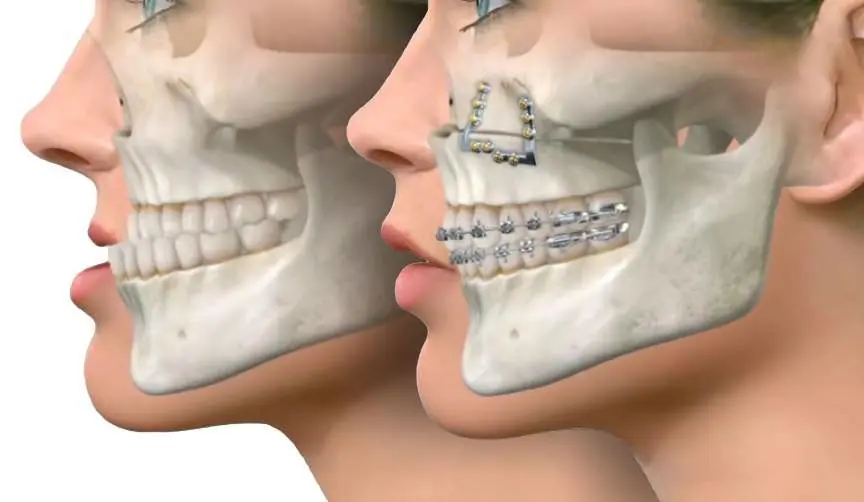
Orthognathic Surgery (Jaw Surgery)
What is Orthognathic Surgery ?
Orthognathic surgery or jawbone surgery is a procedure to correct the position and condition of the jawbone. In most cases, the treatment may involve both jawbone surgery and teeth alignment. Therefore, the oral and maxillofacial surgeon who performed orthognathic surgery will work with the orthodontist specialized in teeth alignment for the best result in improving both functionality and appearance of the jawbone.

Facial Structure for Orthognathic Surgery
Upper Jaw Protrusion
The upper jaw and teeth are sticking out to the front more than usual. The patient is unable to close the mouth properly. When smiling, the upper teeth is receding the lower teeth, and the gum is visible more than usual.
Receding Upper Jaw
Receding Upper Jaw is a less development in the upper jaw. This condition is usually seen in patient with “Cleft Lip and Cleft Palate”. Having Cleft Lip and Cleft Palate treatment during young age may limit the development of the upper jaw.
Lower Jaw Protrusion
Lower Jaw Protrusion is a misdevelopment of the lower jaw, causing a large lower jawbone, the lower jaw and teeth sticking out more than usual, and excessive longer face. When smiling, the upper teeth will bite under the lower teeth.
Receding Lower Jaw/Weak Chin
Receding Lower Jaw is a less developed chin causing from heredity factors. The chin is setting back, creating an imbalanced chin and jawline or “Bird Face”.
Orthognathic Surgery Process
- Consultation : The dentist will evaluate the oral condition, X-ray, CT scan, make an impression, checking medical record, to prevent any problem during the anesthesia or surgery.
- Preoperative appointment : Having teeth alignment to correct the bite problems
- The surgery and aftercare : The patient is required to stay at the hospital 1 day before the surgery. Food and drinks are prohibited to prepare for the surgery. During the surgery process at the hospital, the anesthesia is injected. Blood transfusion may be given during the operation. The patient may need to rest at the hospital for 1-3 days after the surgery.
- After the surgery : Another teeth alignment will be carried to complete the bite problems
Orthognathic Surgery Duration
Orthognathic surgery can take 1.5 hours at minimum, depend on cases and types of operation. The operation usually performed inside the mouth only, to prevent from visible scar.
Orthognathic Surgery Aftercare
- Follow the dentist instructions seriously.
- Taking good oral hygiene, brushing the teeth with soft brush and mouth-washing to avoid any inflection or postoperative complication.
- Have only soft food for 2-4 weeks.
FAQ
A : Orthognathic surgery is a procedure to treat the misalignment of the jawbone, not the misalignment of the teeth. Therefore, it is necessary to have teeth alignment as well to adjust the alignment of the teeth.
A : How to reduce the swelling after Orthognathic surgery;
- Take medicine to reduce the swelling
- Use cold compress on the first 3-5 days after the surgery, then change to hot compress for another 3 days, or as instructed by the dentist.
- Sleep on high pillow about 30 degree for 2 weeks.
A : Each patient may feel the pain differently. Taking painkillers and aftercare instructions as suggested by the surgeon or dentist will help relieving the pain after the surgery.
A : What to avoid after the Orthognathic surgery;
- Avoid chewing hard food for at least 3 months
- Avoid heavy activities or exercises such as jogging, heavy lifting because the wound may open and start bleeding.


 ไทย
ไทย

